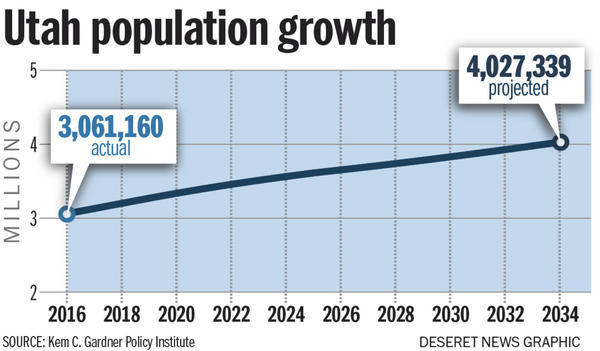This op-ed originally appeared in Salt Lake Tribune on November 11, 2024.
Recent data shows that short-term rentals in Utah surged by 40% from 2021 to 2023, totaling around 25,000 units across the state. This has led some state and local officials, including the governor, to eye short-term rental regulation as a potential solution for Utah’s affordable housing shortage, which currently exceeds 40,000 units. But, as promising as this approach may sound, the reality is more complicated.
The Numbers
Banning or limiting short-term rentals might seem like an impactful solution, but it would barely make a dent in our housing shortage.
Currently, short-term rentals make up just 1.8% of Utah’s housing stock. If every one of these units were converted into long-term rentals or housing, it would represent less than a 2% increase in available housing. For a state facing such a large deficit in affordable units, this small shift wouldn’t fundamentally alter the market.
Moreover, even if short-term rentals were banned, any positive effects on housing affordability would be temporary. Utah’s rapid population growth means the market would likely absorb these additional units within a year, leaving the state once again facing a shortage.
The Realities
Short-term rentals in Utah are heavily concentrated in resort areas with high tourism demand, particularly Park City and Snyderville. In fact, about a third of Utah’s short-term rentals are located here. Most of these homes are priced at well over $1 million — far out of reach for those seeking affordable housing. Even if converted into long-term rentals, the reality is that these homes would remain unaffordable for the majority of Utah residents.
This dynamic underscores why focusing on short-term rentals as a solution to housing affordability is misguided. Rather than meeting local housing needs, these rentals primarily serve the tourism sector, which generates significant revenue for Utah. A blanket ban would thus disproportionately impact the local economies of resort areas without meaningfully addressing the statewide housing shortage.
The New York City Effect
New York City recently implemented restrictions on short-term rentals, yet its housing crisis persists. Rather than increasing affordable housing, the new regulations have created additional challenges for property owners, renters and tourists alike. This serves as a cautionary example of how restrictions alone do little to address the root causes of housing shortages. In Utah’s case, even a complete ban would be a “band-aid on a bullet wound” solution that fails to address the core issue: a dire need for more housing supply.
“Short-term rentals aren’t going away any time soon,” says Aaron Kirkham, owner of Conmigo Vacation Rentals and Board member of the Utah Short-Term Rental Association. “This is what travelers demand, thus education, licensure for operators, and good practices between governments and hosts are the way forward.”
The Real Solution
If Utah wants a sustainable approach to affordable housing, we need to expand our overall housing stock through zoning reforms and infrastructure investment.
Restrictive zoning laws limit the construction of affordable units, especially in high-demand areas. Resort towns and counties could address local housing challenges by revisiting zoning laws that currently prevent the development of duplexes, courtyard apartments and other “missing middle” housing types. These kinds of reforms would not only add units but also diversify the types of housing available.
Additionally, minimum lot sizes and permitting requirements pose further barriers to development. Streamlining permitting processes and adjusting lot size regulations would help builders more easily meet market demand, keeping prices down and easing pressure on the existing housing stock.

Preserving Property Rights While Growing Supply
Short-term rentals offer both residents and visitors an alternative to hotels, often providing more space, privacy and amenities. Respecting property owners’ rights to use their homes as short-term rentals is vital, as is recognizing the economic benefits these properties bring to communities. A balanced approach that respects individual property rights while tackling structural barriers to new housing construction will be key to any lasting solution.
While short-term rentals add a small amount of strain to the housing market, they are far from the main cause of Utah’s affordable housing crisis. As Utah grows, so must its housing stock. Focusing on effective zoning reforms and efficient permitting is the path forward.






